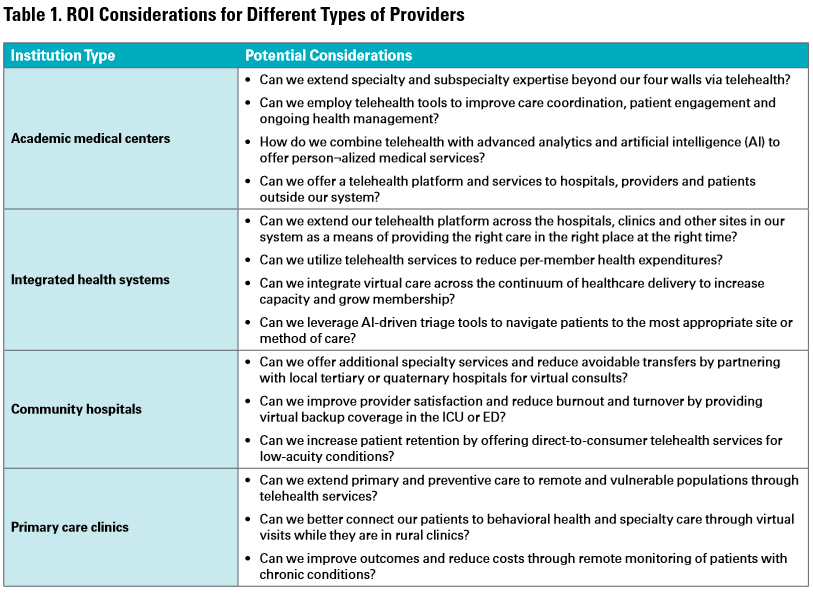
Telehealth has been a buzzword lately in the healthcare industry. With all this talk about how telehealth can help improve the quality of care and overall revenue for your practice, there comes the point when it merits serious consideration. The real question is, "How do you track your Return On Investment (ROI) from implementing telehealth systems."
Unfortunately, calculating ROI for telehealth systems is different from practice to practice. Luckily, Manatt Health Strategies has been working on a solution. Manatt did a case study on one rural healthcare organization and one more urban healthcare organization to determine who to decide which factors should be included to define the ROI from a new telehealth system. They identified four different institution types that have unique considerations they should consider. (Table 1)
Along with these clearly defined institution types and unique considerations, there are seven general considerations that every healthcare organization should look at when deciding how to determine their ROI. Each of these general considerations has a vital aspect they test, but you have to think critically and ask the right questions to see their value. First, Patient Acuity Mix, Cost Savings, and Reimbursement or Contract Revenue all have to do with the revenue stream of your healthcare practice. By analyzing the changes in these three considerations, you can determine how your telehealth system has impacted your revenue. Next, New-Patient Volume and Patient Retention reflect how your patients are responding to your telehealth system, potentially how telehealth is enhancing the quality of their care. Last, Technology, Program and Program Management, and Staffing help define costs and staffing requirements of your telehealth system. These directly impact the overhead of your practice. Comparing these three segments to one another can give you a clear view of the ROI for the telehealth system and where you need to think about improvements.
Keep in mind that this is just two case studies from one healthcare strategy group, and as telehealth becomes more widespread, more refined systems to calculate the ROI of your telehealth system will begin to show up. Don't get lost in the data and remember that the ROI of your telehealth system should always be defined by unique considerations for your specific practice. Only you and your patients can determine is telehealth is helping or hurting your practice.
